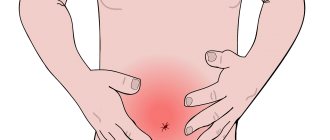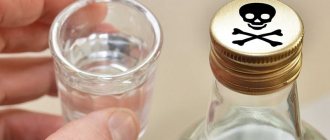Poisoning with chemical compounds mainly occurs due to improper use. It is not for nothing that persons over the age of eighteen, who have undergone special training and have studied safety precautions, are allowed to work with such substances. If intoxication occurs, it is important to provide prompt assistance. It is urgent to determine what kind of disinfectant caused the disease in order to choose the right way to quickly remove it.
How is beryllium used?
First of all, beryllium is an alloying additive for various alloys. The most famous are the so-called beryllium bronzes. Adding just 0.5% beryllium to steel significantly increases its elasticity, hardness and strength. Suffice it to say that springs made of such alloys can operate without changing the elastic modulus almost up to red-hot temperatures, and last a very long time.
Special windows for X-ray installations are made from beryllium and its compounds, since beryllium absorbs X-rays very weakly. In nuclear energy, beryllium is used as a neutron moderator, and if beryllium oxide is combined with uranium oxide, then this mixture works as an effective nuclear fuel.
Beryllium is indispensable in the production of materials for laser emitters, and in aerospace engineering, beryllium and its compounds make it possible to obtain structural materials that are very light, durable and heat-resistant. The fact that beryllium is one and a half times lighter than aluminum allows it to be used in the military aviation industry. Beryllium is also used to produce fireproof materials.
But with all its irreplaceable properties and great “advantages”, this element is highly toxic, and there is even a special name for chronic damage to the body. This disease is berylliosis . But, before talking about the manifestations of berryliosis , it is necessary to indicate the sources of danger to human health associated with this element.
Sources of beryllium intoxication
A lot of beryllium is found in tomatoes and greens.
Beryllium
It is known that every day 0.01 mg of this element enters the human body along with various food products; this should be normal, and at such concentrations beryllium does not cause any signs of intoxication and beryllium disease. Soluble and volatile compounds of this element are toxic. This is metal dust, and its concentration in the air of industrial premises should not exceed 0.001 mg per cubic meter.
Berylliosis as an occupational disease develops with prolonged inhalation of air that contains higher concentrations of this element. Beryllium causes severe allergies, and with prolonged exposure contributes to the development of malignant neoplasms; beryllium is carcinogenic. Its compounds have a strong irritant effect on the mucous membrane and skin; they can cause conjunctivitis, pharyngitis and toxic rhinitis, pneumonia.
One of the most unpleasant facts associated with the toxic effects of beryllium is its delayed action. It has been proven that even 15 years after the cessation of all industrial contact with beryllium and its compounds, signs of an occupational disease may appear.
How do toxic changes develop in the body? the harm of beryllium gradually accumulate and manifest itself at the cellular and tissue level?
Giving help
Knowing that the victim has definitely come into contact with organic chemicals, first aid should be provided immediately. To do this, you need to clearly understand what to do in case of poisoning with chemical compounds:
- evacuate the poisoned person to fresh air, loosen (unfasten) the clothes on the chest,
- give 2 liters of water to drink and induce vomiting to flush the stomach,
- rinse your mouth with water (repeatedly),
- drink strong sweetened tea,
- give laxatives, sorbents,
- in case of contact with skin, wash the affected area thoroughly with warm water and soap,
- in case of contact with the eyes, rinse thoroughly under running water for a long time, followed by applying a bandage (if the eyes are severely affected),
- if the victim is unconscious, place him on his back, turning his head to the side to avoid aspiration of vomit and retraction of the tongue.
When intoxicated with an organic solvent, the blood rapidly spreads poisons throughout the body, so first aid should be provided immediately as soon as the first suspicion of poisoning appears. When the team arrives, in case of severe poisoning, the victim will be taken to the toxicology department and given proper treatment.
How changes develop in the body
Almost all of the toxic effects of this element on the body are associated with divalent ionized beryllium. It is this substance that causes allergies, induces the growth of malignant tumors, its presence is manifested by general toxic effects, and it has a harmful effect on the fetus.
Research has shown that beryllium is capable of causing gene mutations at the DNA level . As for general intoxication, it is associated with the penetration of ionized beryllium into nuclear and mitochondrial cellular structures. This leads to a disorder in the synthesis of cellular proteins.
At the tissue level, this is manifested by the formation of specific granulomatous inflammation, for example in lung tissue. This granulomatous inflammation underlies the pathogenesis of pulmonary berylliosis. The main histological structure of berylliosis is granuloma. A sign of beryllium granuloma will be a dense consistency and a grayish-white color.
The picture shows berylliosis of the lungs
Its size does not exceed one and a half centimeters, the granuloma consists of various polymorphic cellular elements, as well as giant cells of the Pirogov type with crystalline formations inside. After the granuloma matures, it begins to produce collagen, and the development of the granuloma is completed by transforming it into a nodule of connective tissue. In the event that a granuloma has formed in the functional alveolar lung tissue, which was engaged in gas exchange, then this area is turned off from ventilation, thereby reducing the vital capacity of the lungs and the oxygen saturation coefficient of the blood.
Beryllium is able to change the activity of many enzymes that are necessary for normal cellular energy metabolism. These are lactate dehydrogenase, alkaline phosphatase and other enzymes that are affected by beryllium in muscle and bone tissue, in parenchymal internal organs. In the blood, the ratio of proteins between albumins and globulins changes, and dysproteinemia occurs.
What are the symptoms of beryllium poisoning in acute and chronic form?
Symptoms and signs
Video - Berylliosis, who is at risk of getting berylliosis?
Most often, severe acute intoxication occurs not when inhaling beryllium metal dust, but when the bronchopulmonary system is exposed to its volatile fluoride compounds. Perhaps beryllium fluoride is the most toxic of all compounds of this metal, and acute poisoning with it is insidious and long-lasting.
Symptoms of beryllium poisoning in this case begin with violent and stunning chills, and a rise in temperature to 40 ° C and above. Severe symptoms of intoxication appear, such as headache, general weakness, drowsiness. Chest pain occurs and a cough appears. Such symptoms are extremely reminiscent of acute pneumococcal pneumonia, but usually the patient always notes the presence of a possible condition of poisoning at work, since inhalation of beryllium fluoride at home is excluded.
Most often, such situations associated with inhalation of soluble beryllium compounds arise exclusively in emergency situations that arise in melting and casting shops. But in complex cases, diagnosing berryliosis can be confusing, especially when there are subtle releases of compounds
Usually, after a few hours of such a clinical picture, everything goes away, the next day the patient’s temperature returns to normal, the symptoms of intoxication disappear, and even the ability to work is restored. This period of “imaginary well-being” lasts from 2 days to 3 weeks, and then a picture of severe damage to the respiratory tract develops. The shorter this period, the more severe the picture and course of the second phase of the disease will be.
Berylliosis – normal bronchi (left), damaged bronchi (right)
The patient's temperature rises again to 40°C or higher, severe shortness of breath occurs, the skin, tips of the nose and ears, and fingertips turn blue. This phenomenon is called diffuse cyanosis and is associated with a sharp decrease in blood oxygen saturation. Against this background, blood pressure may drop to collapsed levels, and patients experience an enlarged liver. The blood reacts, leukocytosis and lymphopenia, relative erythrocytosis are determined in it, and the ESR increases.
This phase of the disease lasts up to a month, in case of severe poisoning – up to 3 months, and is often accompanied by focal toxic pneumonia. The presence of focal pneumonia significantly worsens the prognosis and aggravates the course of acute poisoning.
Beryllium is very insidious, with such damage to beryllium fluoride a relapse or return of severe clinical symptoms is possible, and such a protracted nature of the course often worsens the ability to work so much that a patient who has been poisoned once is ultimately transferred to disability.
In total, the specialized literature describes about 300 cases of acute poisoning caused by beryllium fluoride and its other volatile halides, as well as oxide and sulfate. The prognosis remains unclear until the very last moment, since many patients die from acute toxic pneumonitis with symptoms of increasing acute respiratory and cardiovascular failure. But quite often, complete recovery occurred, about a month after intoxication.
Also, beryllium fluoride, in addition to beryllium lung disease , can also cause skin beryllium disease . As a result, allergic dermatitis develops, which occurs in exposed areas, most often the neck and facial skin. A characteristic symptom is constant and painful itching, swelling of the eyelids; in severe skin lesions, an ulcer formation with necrosis occurs.
Skin necrosis
Forecasts
The prognosis for epoxy glue poisoning is almost always positive.
The prognosis for epoxy resin poisoning is moderately positive. With timely assistance, the vast majority of patients survive and are completely cured.
A threat to life occurs when swelling of the respiratory tract develops, as well as when large amounts of resin are ingested. In such situations, the life of the victim depends on the speed of assistance and the professionalism of doctors.
Symptoms of chronic poisoning (beryllosis)
Signs of chronic poisoning are almost always associated with metal dust and have nothing to do with volatile and soluble compounds. The insidiousness of beryllium is that lung damage occurs not only in workers who come into contact with the metal at work, but also in those people who live near enterprises, and in those who have contact with work clothes.
Beryllium powder
The latent period of the disease can range from several weeks and even up to 10 years. As mentioned above, many years after cessation of contact with the poison, signs of the disease may develop, although in almost half of patients with chronic Berliosis, such a latent period did not exceed 1 year.
It should be emphasized that there is no connection between the concentration of beryllium in the alloy that caused the poisoning and the severity of the condition. There have been many cases of chronic poisoning when working with beryllium bronze, which contained no more than 2% metal. But at the same time, among the patients there were patients with mild forms and those with rapidly progressing ones, which were life-threatening.
Typically, severe chronic beryllium poisoning occurs in three successive stages, and the first stage is very similar to acute symptoms:
- at the first stage, the patient usually sharply loses body weight, he is constantly worried about general weakness, he experiences pain in the chest, even severe, and a cough with sputum appears.
Typically, such patients often go to a phthisiatrician, since this picture is very similar to tuberculosis. But if there is an occupational safety center at the workplace, then such a patient is sent to an occupational disease clinic, where he undergoes a skin test with beryllium, which gives a positive result;
- At the second stage of chronic intoxication, both with continued exposure to metal and its dust, and after the cessation of intoxication, shortness of breath appears.
It intensifies with exercise, and symptoms of berriliosis appear, such as severe joint and muscle pain. Also, against the background of exhaustion, the patient develops cyanosis, the lymph nodes become enlarged, even at rest, the frequency of respiratory movements increases to 20 per minute, and during functional studies, such as spirography, a decrease in the vital capacity of the lungs is noted.
Emphysema
An x-ray can identify the symptoms of developing pulmonary emphysema, diffuse bronchitis and bronchiolitis. The heart rate increases, the radiograph shows a pronounced increase in the border of the heart to the right, the contrast of the vascular pattern in the lungs sharply increases, and a large number of different rounded shadows are noticeable across all pulmonary fields;
- The third stage of chronic severe beryllium intoxication occurs as a type of progressive respiratory failure.
The patient is bothered by very severe shortness of breath even at rest, the lips and nasolabial triangle are sharply cyanotic, the configuration of the fingers changes like “drumsticks”, which is a classic sign of severe chronic respiratory failure. The activity of the bronchopulmonary system is completely disrupted. Various moist pulmonary rales are heard, symptoms of pleurisy appear, the vital capacity of the lungs decreases even more, and gross disturbances in the functioning of the liver occur. Patients often have a fever of 38 degrees or higher, which is also a sign of pulmonary berryliosis with secondary lesions.
Against the background of such unfavorable progressive symptoms, complications such as spontaneous pneumothorax and worsening cardiopulmonary failure often occur. Such patients often require oxygen and are severely disabled. Quite often, such severe lung damage is accompanied by symptoms of contact dermatitis.
Prevention
- Compliance with safety precautions in the workplace and all stages of the technological process during professional contact with copper.
- Strict adherence to instructions for working with copper-containing pesticides.
- Use of personal protective equipment (mask, respirator, goggles, gloves) when in contact with copper-containing toxic chemicals.
- Avoid storing or preparing food in copper utensils.
- Keep chemicals containing copper out of the reach of children.
Treatment of berylliosis
In conclusion, it must be said that there is no specific treatment for Berliosis , and there are no particularly effective antidotes that can prevent the development of acute and chronic clinical symptoms. Treatment is exclusively pathogenetic and symptomatic, antibiotics are used to prevent secondary pulmonary infection, cardiac analeptics are used to prevent the development of pulmonary fibrosis and the formation of granulomas, corticosteroid hormones are widely used, which can be used for a long time. To treat toxic dermatitis, antihistamines and local agents containing corticosteroid hormones are used.
Prevention is much more important. All production processes that emit volatile beryllium compounds must be sealed, a ventilation system must be organized to neutralize volatile compounds, and the mandatory use of personal protective equipment.
Periodic medical examinations of workers in accordance with order number 302N play a very important role. When a diagnosis of berylliosis of any severity is made, the person must be transferred to another job that is not associated with this hazard factor. Regular skin testing is very important, and if the result is positive, the employee is also transferred to another job.
Inpatient therapy
The doctor will determine the severity of the poisoning, the cause of its occurrence and prescribe a course of treatment aimed at detoxifying the body:
- gastric lavage using a special probe,
- forcing diuresis,
- droppers with sodium bicarbonate, glucose (to restore acid-base balance),
- hemodialysis,
- injections with insulin, cysteine, glucose, methionine and vitamins,
- antipsychotic drugs (for seizures),
- anti-shock therapy (if there are heart problems),
- oxygen inhalations,
- diet.
Assistance provided in case of solvent poisoning, carried out quickly and professionally, should gradually lead to an improvement in the victim’s condition. But chemical poisons that enter the body in large quantities leave their mark for a long time, which often leads to new problems.










